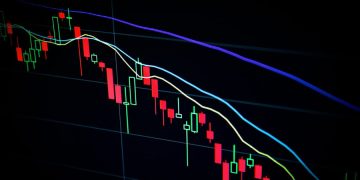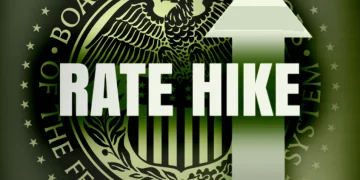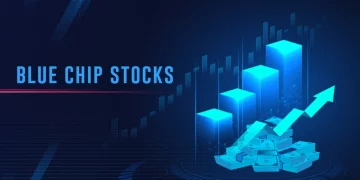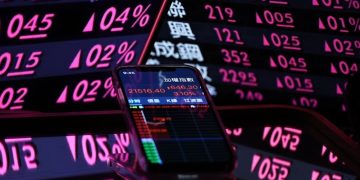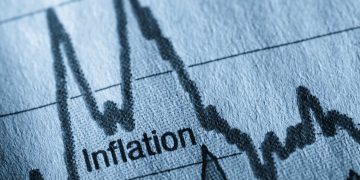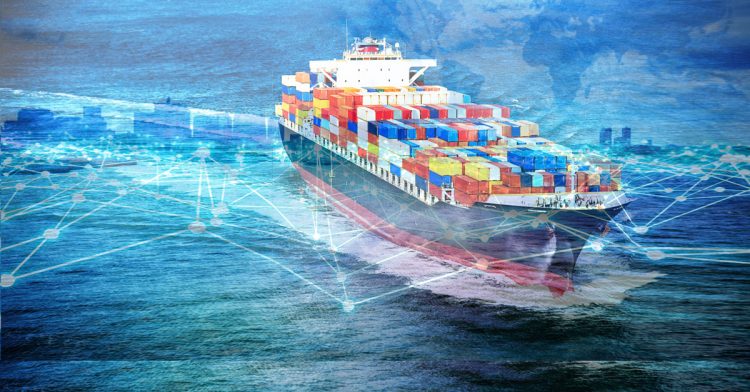Introduction
The global supply chain crisis, which emerged in the wake of the COVID-19 pandemic, continues to be one of the most significant challenges facing the global economy. From factory shutdowns and port congestion to labor shortages and shipping delays, the disruptions to supply chains have been far-reaching and persistent. While the world has witnessed some improvements in supply chain conditions in recent months, many experts remain uncertain about whether the crisis has truly reached its bottom, or whether further challenges lie ahead.
In this article, we will explore the current state of the global supply chain crisis, its underlying causes, and the potential factors that could either stabilize or further exacerbate the situation. We will analyze key sectors affected by the crisis, the role of geopolitical tensions, and the long-term structural shifts in global trade. Ultimately, we aim to provide a comprehensive understanding of the supply chain landscape and the outlook for the future.
1. The State of the Global Supply Chain Crisis: Current Conditions
a. Recovery from the Pandemic Shock
When the COVID-19 pandemic swept across the globe, it triggered an unprecedented disruption in supply chains. Factories in major manufacturing hubs such as China and Southeast Asia were forced to shut down, while labor shortages, lockdowns, and strict health protocols made it difficult to maintain production levels. This led to widespread delays and bottlenecks, with companies struggling to secure the raw materials and components needed to meet demand.
- Initial Shock to the System: The initial shock caused significant disruptions to the flow of goods, leading to empty shelves, skyrocketing shipping costs, and delays in essential supplies. As global demand began to rebound in 2021, supply chains were still operating at reduced capacity due to the lingering effects of the pandemic.
- Recent Improvements: In the last quarter of 2023 and into early 2024, there have been signs of recovery. Ports, particularly in the United States and Europe, have cleared up congestion, and shipping times have improved. Additionally, many manufacturing plants have returned to full operational capacity, and shipping costs have dropped from their pandemic highs. However, despite these improvements, the recovery has been uneven, with some sectors and regions still facing significant challenges.
b. Persistent Bottlenecks and Disruptions
While some aspects of the global supply chain have shown signs of improvement, certain persistent challenges remain. For instance, semiconductor shortages, which began during the pandemic, have continued to disrupt industries such as automotive manufacturing and consumer electronics. Additionally, labor shortages in key industries—such as trucking and warehousing—continue to create delays, even in regions where shipping congestion has lessened.
- Semiconductor Crisis: The semiconductor shortage remains one of the most notable long-term consequences of the pandemic on global supply chains. With the growing demand for electronics, automotive components, and industrial machinery, the supply of semiconductors has not been able to keep pace. While supply is gradually increasing, the global chip shortage is expected to last into 2025, leading to continued production delays in affected industries.
- Labor Shortages: The labor market remains tight in many regions, with companies struggling to fill positions in critical parts of the supply chain, such as warehouse workers, truck drivers, and dock workers. These labor shortages contribute to inefficiencies, increased labor costs, and delays in the transportation of goods.
2. Key Factors That Could Lead to Further Supply Chain Strain
a. Geopolitical Tensions and Trade Barriers
Geopolitical tensions, particularly the ongoing trade disputes between the United States and China, as well as conflicts such as the war in Ukraine, could contribute to a worsening of the global supply chain crisis. These tensions have the potential to disrupt trade flows, create new trade barriers, and increase the cost of doing business across borders.
- U.S.-China Relations: Trade tensions between the U.S. and China have remained high, with tariffs and sanctions being imposed on a variety of goods. While some of the tariffs imposed during the trade war have been reduced, uncertainties about future policies and retaliatory measures still affect global supply chains, especially in industries reliant on Chinese manufacturing.
- Ukraine Conflict: The war in Ukraine has had a far-reaching impact on global supply chains, especially for energy, agricultural products, and certain raw materials. The conflict has disrupted the supply of natural gas, wheat, and other critical commodities, leading to higher prices and shortages in parts of Europe and beyond. Additionally, sanctions on Russia have affected energy exports and transportation routes, further straining supply chains.
- Increased Protectionism: As global supply chain disruptions have worsened, some countries have increasingly turned to protectionist policies to safeguard their own economies. Import restrictions, export controls, and regulatory barriers have been put in place in an attempt to manage domestic shortages or ensure the stability of local industries. These measures could further exacerbate the supply chain crisis by reducing global trade flows.
b. Environmental Disasters and Climate Change
Climate change and extreme weather events are increasingly influencing supply chain dynamics. Natural disasters, such as hurricanes, floods, and wildfires, have the potential to disrupt production facilities, damage infrastructure, and cause delays in shipping. As global supply chains become more interconnected, the impact of localized disruptions can quickly ripple across regions.
- Extreme Weather Events: Events such as hurricanes in the U.S. Gulf Coast or floods in China’s industrial regions have frequently disrupted production and transportation in key sectors. As climate change accelerates, these events may become more frequent and severe, increasing the vulnerability of supply chains to natural disasters.
- Energy and Resource Constraints: Many industries rely on the availability of cheap and abundant energy to power production. As countries move towards renewable energy sources and face fluctuating prices for oil and natural gas, energy constraints could further affect the cost and reliability of supply chains. Additionally, resource constraints, particularly in critical minerals like lithium and cobalt, may hinder the production of essential components such as batteries and electronic devices.
3. The Structural Shifts in Global Supply Chains: What Will Change Long-Term?
a. Diversification and Nearshoring
One of the significant responses to the global supply chain crisis has been the increasing trend toward diversification and nearshoring. Companies have begun to reassess their reliance on single countries or regions for manufacturing and have shifted production closer to home markets or to regions with more stable supply chains.
- Nearshoring: Instead of depending on low-cost labor in countries like China, many companies are shifting production to nearby regions. In North America, for example, businesses are increasingly moving operations to Mexico, while European companies are expanding their operations in Eastern Europe. This trend is intended to reduce the risks associated with long supply chains and to mitigate the impact of rising transport costs.
- Diversification of Suppliers: Companies are also diversifying their supplier base to mitigate the risks associated with overreliance on a single supplier or country. By spreading their procurement needs across multiple regions, businesses can reduce the impact of disruptions in any single location, making their supply chains more resilient to global shocks.
b. Digitalization and Automation
The global supply chain crisis has accelerated the adoption of digital technologies and automation in many industries. Companies are investing in supply chain management software, robotics, and artificial intelligence (AI) to improve the efficiency and flexibility of their operations. These technologies help companies predict demand, track inventory in real-time, and respond more quickly to changes in the market.
- Automation in Warehouses and Manufacturing: Automation is transforming the way goods are stored, sorted, and distributed. Robotics in warehouses and autonomous vehicles for last-mile delivery are reducing the reliance on human labor and increasing the speed and efficiency of supply chains. These advancements could help mitigate the impact of labor shortages and reduce dependence on global shipping.
- Blockchain for Transparency: Blockchain technology is increasingly being adopted to improve transparency and traceability within supply chains. By creating a secure and immutable digital ledger, companies can more easily track the movement of goods and verify the authenticity of products. This transparency can help identify bottlenecks, improve decision-making, and reduce the risk of fraud or counterfeiting.

4. Will the Crisis Worsen or Stabilize? A Complex Outlook
The global supply chain crisis is unlikely to have a single, straightforward resolution. While some signs of recovery are evident, the situation remains fragile and vulnerable to various global factors. In the short term, supply chains may experience periods of stability, but the risks of further disruptions persist, particularly due to ongoing geopolitical tensions, climate change, and other emerging challenges.
- Short-Term Outlook: In the near term, we may see more periods of stabilization as pandemic-related disruptions subside. Shipping costs, port congestion, and factory shutdowns are expected to improve gradually, especially if the global economy grows at a stable pace. However, continued challenges such as semiconductor shortages and labor market imbalances will still pose significant hurdles.
- Long-Term Outlook: Over the long term, structural shifts in global supply chains are likely to continue. Companies will increasingly prioritize resilience over cost-cutting, diversifying suppliers and nearshoring production to ensure that their supply chains can withstand future disruptions. The adoption of new technologies will also help companies better anticipate and mitigate risks, making global supply chains more flexible and adaptable.
However, external factors such as geopolitical conflicts, environmental crises, and economic policies could lead to further volatility. The global supply chain crisis may not be over yet, and it is still too early to say whether the world has truly reached the bottom or if the situation will worsen again in the near future.
Conclusion
The global supply chain crisis has been a transformative event for businesses, governments, and consumers alike. While there have been some signs of recovery, the crisis is not yet over, and several factors continue to pose risks to stability. Geopolitical tensions, climate change, and the structural shifts in global trade are all elements that could further disrupt supply chains in the future.
However, the pandemic-induced disruptions have also triggered significant long-term changes in the way companies manage their supply chains. Diversification, nearshoring, automation, and digitalization are all reshaping global trade patterns, making supply chains more resilient to future disruptions. As the world continues to navigate these challenges, businesses will need to remain agile and adaptable to ensure the stability of their operations in an increasingly complex and uncertain global landscape.



